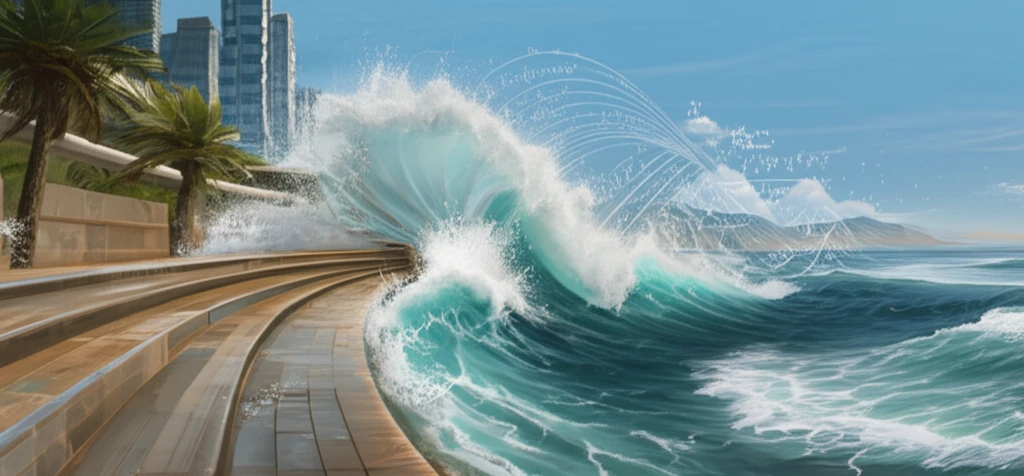
Riding the Wave: How Coastal Engineers are Using Math and Tech to Protect Our Shores
"From tsunamis to everyday swells, understanding wave dynamics is crucial for coastal defense. Explore how researchers are blending classic equations with cutting-edge tech to safeguard our coastlines."
Waves, in their majestic and sometimes destructive power, have always shaped our coastlines and influenced human settlements. Understanding how waves interact with coastal structures is crucial for protecting coastal communities and infrastructure. This challenge has driven coastal engineers and researchers to develop increasingly sophisticated methods for predicting and mitigating the impact of waves, particularly extreme events like tsunamis and storm surges.
The traditional approach to understanding wave behavior involves complex mathematical models rooted in fluid dynamics. These models, often based on the Euler equations, describe the motion of fluids under various conditions. However, solving these equations, especially when waves interact with solid structures like seawalls, can be incredibly challenging. This is where advanced numerical techniques come into play.
Recent research has focused on combining classical fluid dynamics with cutting-edge computational methods to simulate wave impacts on coastal defenses. Two prominent approaches are Eulerian and Lagrangian modeling, each offering unique advantages in capturing the complexities of wave-structure interactions. By comparing these models and validating them against experimental data, engineers can gain valuable insights into how best to protect our shorelines.
Decoding Wave Dynamics: Why Mathematical Models Matter

At the heart of understanding wave behavior lies a set of fundamental equations that describe fluid motion. The Euler equations, for instance, are a cornerstone of fluid dynamics, providing a mathematical framework for analyzing how fluids move and interact. However, these equations are notoriously difficult to solve analytically, especially when dealing with complex scenarios like waves crashing against a seawall.
- Eulerian Approach: Imagine setting up cameras along the beach and recording the water level and velocity as a wave passes each camera. This is similar to how Eulerian models work, focusing on fixed locations and measuring changes as the wave moves through.
- Lagrangian Approach: Now, picture yourself on a surfboard, moving with the wave. The Lagrangian approach is like that – it tracks individual water particles as they move and deform with the wave.
The Future of Coastal Defense: Combining Models and Real-World Data
Protecting our coastlines from the relentless power of waves requires a multi-faceted approach that combines advanced modeling techniques with real-world data. By comparing the predictions of Eulerian and Lagrangian models with experimental measurements, engineers can refine their understanding of wave-structure interactions and develop more effective coastal defenses. As climate change continues to drive rising sea levels and more frequent extreme weather events, these efforts will become increasingly critical for safeguarding coastal communities and ensuring a sustainable future.
